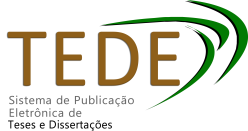| Compartilhamento |


|
Use este identificador para citar ou linkar para este item:
https://tedebc.ufma.br/jspui/handle/tede2/5825Registro completo de metadados
| Campo DC | Valor | Idioma |
|---|---|---|
| dc.creator | LIMA, Maylanne Sousa de | - |
| dc.creator.Lattes | http://lattes.cnpq.br/6517309368351180 | por |
| dc.contributor.advisor1 | BOMFIM, Marcos Antonio Delmondes | - |
| dc.contributor.advisor1Lattes | http://lattes.cnpq.br/2299520175860743 | por |
| dc.contributor.referee1 | BOMFIM, Marcos Antonio Delmondes | - |
| dc.contributor.referee1Lattes | http://lattes.cnpq.br/2299520175860743 | por |
| dc.contributor.referee2 | RIBEIRO, Felipe Barbosa | - |
| dc.contributor.referee2Lattes | http://lattes.cnpq.br/5843372571035012 | por |
| dc.contributor.referee3 | MARCHÃO, Rafael Silva | - |
| dc.contributor.referee3Lattes | http://lattes.cnpq.br/2846114784139547 | por |
| dc.date.accessioned | 2025-01-23T16:17:31Z | - |
| dc.date.issued | 2024-08-29 | - |
| dc.identifier.citation | LIMA, Maylanne Sousa de. Níveis de energia digestível em rações para tambatingas na fase entre 20 e 100 gramas. 2024. 52 f. Dissertação (Programa de Pós-Graduação em Ciência Animal (25.06)/CCAA) - Universidade Federal do Maranhão, Chapadinha, 2024. | por |
| dc.identifier.uri | https://tedebc.ufma.br/jspui/handle/tede/5825 | - |
| dc.description.resumo | A energia é um componente nutricional obtido através da oxidação dos nutrientes orgânicos que compõe a dieta, sendo utilizada para mantença e produção de novos tecidos corporais. Objetivou-se determinar o nível de energia digestível na ração do tambatinga (♀Colossoma macropomum x ♂Piaractus brachypomus) na fase entre 20 e 100 gramas. Foram formuladas cinco dietas com diferentes níveis de energia digestível (2.900, 3.000, 3.100, 3.200, 3.300 Kcal de ED/kg). Foram utilizados 192 juvenis de tambatinga com duas faixas peso inicial: 23,70 ± 0,34g e 35,93 ± 0,51g, distribuídos em delineamento em blocos ao acaso. O aumento do nível de energia digestível da ração não influenciou (p >0,05) no ganho de peso, taxa de crescimento específico, conversão alimentar, eficiência de energia para o ganho de peso, teor de proteína corporal, deposições corporais de umidade e proteína e a eficiência de retenção de nitrogênio dos peixes. No entanto, observou-se aumento linear (p <0,05) no consumo de energia digestível e no teor de gordura corporal. O teor de umidade corporal reduziu de forma linear (p <0,05) e o teor de cinzas corporal reduziu de forma quadrática (p <0,05) até nível estimado de 3.134 Kcal de ED/kg na ração. Foi observado efeito quadrático (p <0,05) sobre a deposição de gordura e cinzas corporais, com menores valores em 3.038 e 3.108 Kcal de ED/Kg, respectivamente. A recomendação do nível dietético de energia digestível é de 2.900 Kcal /kg, correspondente a relação energia:proteína de 92,95 Kcal de ED/g, por otimizar o desempenho e deposições corporais de tambatingas na fase entre 20 e 100 gramas. | por |
| dc.description.abstract | Energy is a nutritional component obtained through the oxidation of organic nutrients that make up the diet, being used for maintenance and production of new body tissues. The objective of this study was to determine the level of digestible energy in the diet of tambatinga (♀Colossoma macropomum x ♂Piaractus brachypomus) in the phase between 20 and 100 grams. Five diets with different levels of digestible energy were formulated (2,900, 3,000, 3,100, 3,200, 3,300 Kcal of DE/kg). A total of 192 tambatinga juveniles with two initial weight ranges were used: 23.70 ± 0.34 g and 35.93 ± 0.51 g, distributed in a randomized block design. Increasing the digestible energy level of the diet did not influence (p > 0.05) weight gain, specific growth rate, feed conversion, energy efficiency for weight gain, body protein content, body moisture and protein depositions, and nitrogen retention efficiency of the fish. However, a linear increase (p < 0.05) was observed in digestible energy intake and body fat content. Body moisture content decreased linearly (p < 0.05) and body ash content decreased quadratically (p < 0.05) to an estimated level of 3,134 Kcal of DE/kg in the diet. A quadratic effect (p < 0.05) was observed on body fat and ash deposition, with lowest values at 3,038 and 3,108 Kcal of DE/kg, respectively. The recommended dietary level of digestible energy is 2,900 Kcal/kg, corresponding to an energy:protein ratio of 92.95 Kcal of DE/g, to optimize the performance and body deposition of tambatingas in the phase between 20 and 100 grams. | eng |
| dc.description.provenance | Submitted by Jonathan Sousa de Almeida (jonathan.sousa@ufma.br) on 2025-01-23T16:17:31Z No. of bitstreams: 1 MAYLANNESOUSADELIMA.pdf: 580282 bytes, checksum: 7bd2d4b5d2408c50c1e86b38108a8978 (MD5) | eng |
| dc.description.provenance | Made available in DSpace on 2025-01-23T16:17:31Z (GMT). No. of bitstreams: 1 MAYLANNESOUSADELIMA.pdf: 580282 bytes, checksum: 7bd2d4b5d2408c50c1e86b38108a8978 (MD5) Previous issue date: 2024-08-29 | eng |
| dc.format | application/pdf | * |
| dc.language | por | por |
| dc.publisher | Universidade Federal do Maranhão | por |
| dc.publisher.department | DEPARTAMENTO DE CIÊNCIAS AGRÁRIAS E AMBIENTAIS - DCAA | por |
| dc.publisher.country | Brasil | por |
| dc.publisher.initials | UFMA | por |
| dc.publisher.program | PROGRAMA DE PÓS-GRADUAÇÃO EM CIÊNCIA ANIMAL (25.06)/CCAA | por |
| dc.rights | Acesso Aberto | por |
| dc.subject | exigência energética; | por |
| dc.subject | Colossoma macropomum; | por |
| dc.subject | Piaractus brachypomus; | por |
| dc.subject | crescimento; | por |
| dc.subject | deposições de proteína. | por |
| dc.subject | energy requirement; | eng |
| dc.subject | Colossoma macropomum; | eng |
| dc.subject | Piaractus brachypomus; | eng |
| dc.subject | growth; | eng |
| dc.subject | protein deposition. | eng |
| dc.subject.cnpq | Avaliação de Alimentos para Animais | por |
| dc.title | Níveis de energia digestível em rações para tambatingas na fase entre 20 e 100 gramas | por |
| dc.title.alternative | Digestible energy levels in feed for tambatingas in the phase between 20 and 100 grams | eng |
| dc.type | Dissertação | por |
| Aparece nas coleções: | DISSERTAÇÃO DE MESTRADO - PROGRAMA DE PÓS-GRADUAÇÃO EM CIÊNCIA ANIMAL | |
Arquivos associados a este item:
| Arquivo | Descrição | Tamanho | Formato | |
|---|---|---|---|---|
| MAYLANNESOUSADELIMA.pdf | Dissertação de Mestrado | 566,68 kB | Adobe PDF | Baixar/Abrir Pré-Visualizar |
Os itens no repositório estão protegidos por copyright, com todos os direitos reservados, salvo quando é indicado o contrário.




